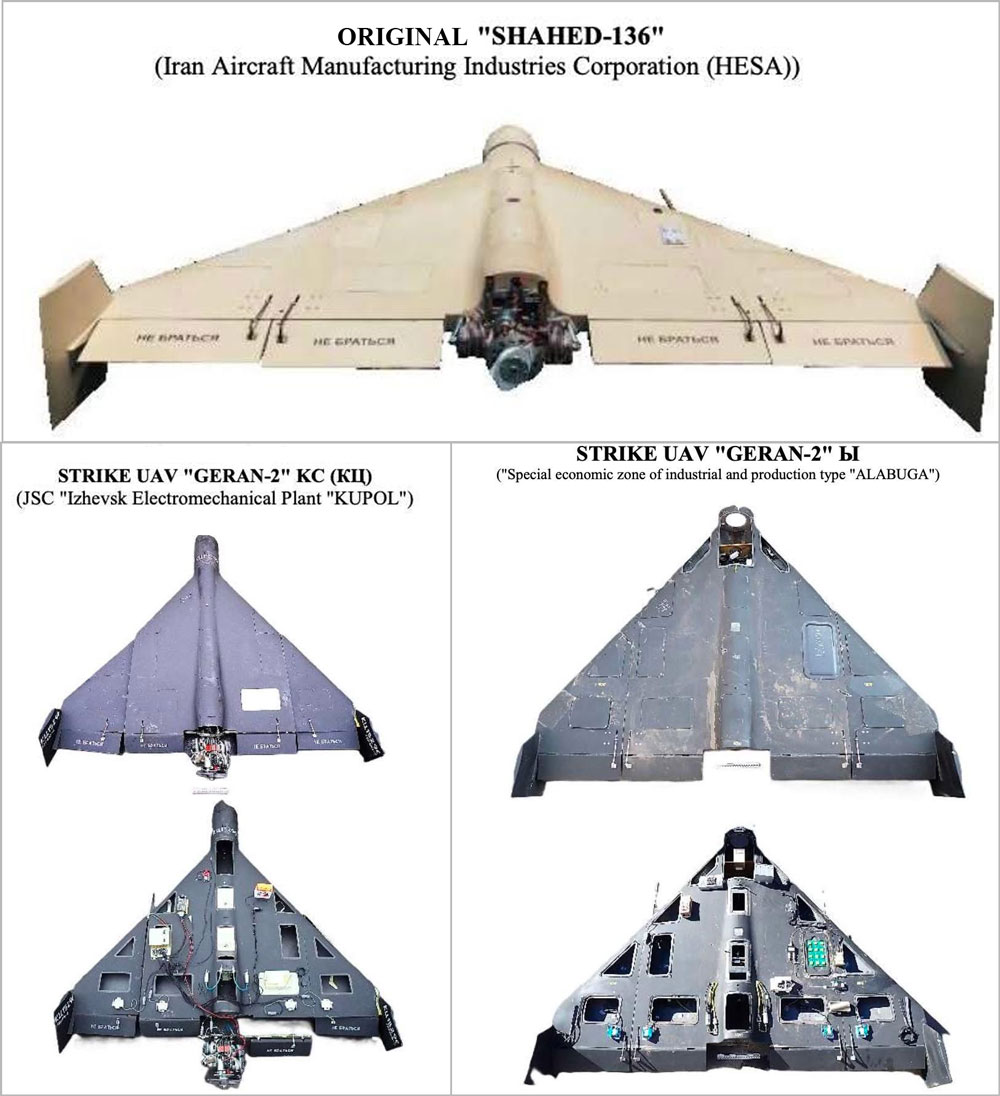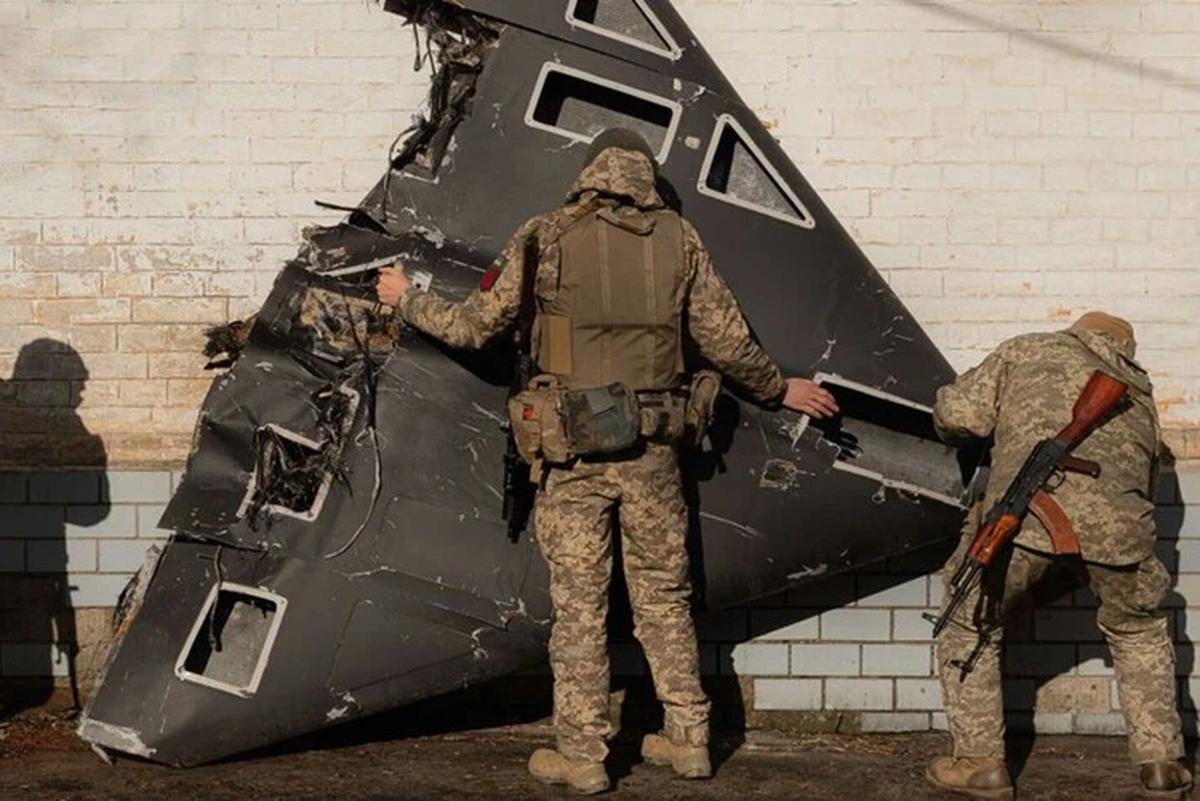Citing Presidential Envoy for Sanctions Policy Vladyslav Vlasiuk, Ukraine’s First Deputy Foreign Minister Serhii Kyslytsya reported on 8 October that Russia is using three distinct variants of the turboprop Shahed drone in its war against Ukraine, all of which rely heavily on foreign-made components. The report does not mention the newer jet-propelled Shahed versions, such as Geran-3.
Alabuga variant built in Tatarstan relies on 294 foreign components
Vlasiuk said the Shahed “Alabuga” model, assembled in Russia’s Tatarstan, contains 294 imported components—the highest among the three. Of those, around 120 come from China and Taiwan, and 100 from the United States. The rest are sourced from other countries. These include high-tech systems such as processors, microcontrollers, and analog-to-digital converters.
According to Vlasiuk, the Alabuga drone is essentially an imported electronics kit with only minor structural adaptations. Russia has tried to replace some outer casing and support elements with domestically made parts, but the critical electronic components remain entirely foreign.

Izhevsk version features more localized parts, still includes 112 foreign components
The Shahed “Izhevsk,” a Russian-modified variant, contains 112 foreign-made elements—less than the Alabuga model but still significant. Vlasiuk noted that 40 of those components originate from the United States and 40 more from China and Taiwan.
Unlike Alabuga, the Izhevsk variant integrates a Russian navigation module and other localized parts. The design also features simplified control elements and a greater share of Russian-made materials. Vlasiuk described this version as a cost-reduction attempt aimed at minimizing reliance on foreign inputs. Still, he made clear that key functions remain dependent on imported high-tech electronics.
Classic Iranian-made Shahed uses 105 imported components, including 40 from the US
The third variant is the original Iranian-produced Shahed drone. Vlasiuk reported it contains 105 foreign-made components, including 40 from the United States. While it features a more traditional layout and a sturdier airframe, it remains reliant on imported electronics like the other two models.
Despite differences in design and part count, Vlasiuk said there is no meaningful difference between the three variants when used in combat.
Sanctions failing to stop flow of high-tech components to Russian drone production
Vlasiuk also expressed astonishment at the ongoing availability of these imported components, many of which were manufactured in 2022, 2023, and even 2024. He said materials and production tools of foreign origin are still being used to support Russian drone assembly.




